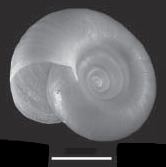Tribe Biomphalariini | Superfamily Planorboidea Subfamily Planorbinae Genus Biomphalaria Rank Species | |
 | ||
Similar Biomphalaria, Biomphalaria straminea, Biomphalaria glabrata, Molluscs, Planorbidae | ||
Biomphalaria tenagophila is a species of air-breathing freshwater snail, an aquatic pulmonate gastropod mollusk in the family Planorbidae, the ram's horn snails.
Contents
This species is medically important pest, because of transferring the disease intestinal schistosomiasis. (Intestinal schistosomiasis is the most widespread of all types of schistosomiasis).
The parasite Schistosoma mansoni, which Biomphalaria snails carry, infects about 83.31 million people worldwide.
The shell of this species, like all planorbids is sinistral in coiling, but is carried upside down and thus appears to be dextral.
Taxonomy
Biomphalaria tenagophila was originally discovered and described under the name Planorbis tenagophilus by the French naturalist Alcide d'Orbigny in 1835. Orbigny (1835) referred its distribution to Corrientes Province, Argentina and to Santa Cruz Department, Bolivia (referred as "Santa-Cruz et Chiquitos"). But Orbigny himself later limited its distribution to Ensenada, Buenos Aires Province, Argentina in 1837.
Subspecies recognized in this species include:
There are also three "old-style" proposals of subspecies, based on shell characteristics:
History of discoveries summarized Paraense (2001).
Phylogeny
A cladogram showing phylogenic relations of species in the genus Biomphalaria:
Distribution
Biomphalaria tenagophila is a Neotropical species and its native distribution include Peru, Brazil, Uruguay and Argentina.
This species has recently expanded its native range.
The non-indigenous distribution of Biomphalaria tenagophila includes a hypothermal spring near Răbăgani, Romania (46°45´1.3´´N, 22°12´44.8´´E).
Shell description
The shell is sinistrally coiled (has left-handed coiling). The flat shells are yellow-brown, discoidal, deeply and symmetrically biconcave, and consist of 5 or 6 slowly increasing whorls. The last whorl is rounded; the intermediate whorls are slightly angled on the left side. The aperture is circular or slightly ovate and angled toward the left side of the shell (i.e., toward the upper surface on the bottom right shell). Fine, parallel, rib-like transverse lines can be seen on the outer surface of the whorls.
The width of the shell is usually from 11 to 13 mm, but in the largest individuals, the shell can reach 21 mm in width, 6.5 mm in height and have 6.5 whorls.
Anatomy
The anatomy of this species was firstly published under the synonym Australorbis nigricans in 1955.
The body length varies from 56 mm to 64 mm.
The radula has from 125 to 168 rows of denticles (tiny teeth). The number of lateral teeth varying from 28 to 36. The mode radula formula is 31-0-31.
The specific characteristics of the reproductive system of Biomphalaria tenagophila are: more than 200 diverticulae of the ovotestis; 7–11 main lobes of the prostate; and presence of vaginal pouch.
Ecology
Habitat of Biomphalaria tenagophila is tropical standing water or freshwater.
Biomphalaria tenagophila is an intermediate host for Schistosoma mansoni and a vector of schistosomiasis. Schistosoma mansoni came to Neotropics from Africa in context of the slave trade. Schistosoma mansoni was not able to infect Biomphalaria tenagophila in 1916 and it has adapted to this host since 1916.
Experimental parasites include:
